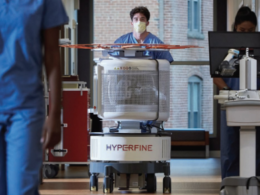As we enter into Patient Safety Awareness Week (March 13–19, 2022), we can reflect on the progress we have made and how much further we need to go.
This is a republication of the post below, with the title above, preceded by an Executive Summary, by the author of the blog.
Linkedin
Stephen Davidow, MBA-HCM, LSSBB, CPHQ, APR
Consultant at Davidow Quality Advantage
March 13, 2022
Key messages
by Joaquim Cardoso MSc.
Chief Editor of “The Health Strategy Blog”
March 13, 2022
- The 2000 report from the Institute of Medicine (IOM) estimated that as many as 98,000 people die in any given year from medical errors that occur in hospitals;
- A more recent estimate from Johns Hopkins in 2016 in the British Medical Journal, noted that medical error caused 250,000 deaths annually …
- Ten years ago, Stephen Davidow and colleagues that the U.S. loses up to $1 trillion in lost human potential as a result of harm or death from preventable medical harm. That is equal to about 5 percent of the U.S. gross domestic product in 2020 (World Bank).
- Their estimate is still a good measure of the total impact of medical errors — possibly even under estimating the cost.
- The magnitude of the problem for our society is many orders of magnitude greater than just the medical costs.”
- As we enter into Patient Safety Awareness Week (March 13–19, 2022), we can reflect on the progress we have made and how much further we need to go.

Ten years ago, my colleagues and I estimated in the Journal of Health Care Finance (October 2012), that the U.S. loses up to $1 trillion in lost human potential as a result of harm or death from preventable medical harm using estimates from the first Institute of Medicine Report, To Err is Human, and subsequent estimates from the Centers for Medicaid and Medicare Services (CMS).
A more recent estimate from Johns Hopkins in 2016 in the British Medical Journal, noted that medical error caused 250,000 deaths annually, making it the third highest ranking cause of death, behind heart disease and cancer, and before respiratory disease.
We use Quality-Adjusted Life Years (QALYs) for our estimates.
Based on the more recent studies, which don’t estimate the number of people harmed, only killed, from preventable medical harm, our estimate is still a good measure of the total impact of medical errors — possibly even under estimating the cost.
It’s a bit difficult to comprehend the enormous emotional and financial cost of medical harm. If $1 trillion is a close approximation, that is equal to about 5 percent of the U.S. gross domestic product in 2020 (World Bank).
From the journal’s 2012 news release:
“Previous studies do not come close to illustrating the economic loss of human potential and contribution, which families, colleagues, businesses, and communities experience when someone dies from a preventable medical error,” said author Stephen Davidow. “The magnitude of the problem for our society is many orders of magnitude greater than just the medical costs.”
“There has been too much focus to date on just the health care cost impact of medical errors. This analysis makes an important contribution to our understanding of the broader economic impact of preventable medical harm,” said Jim Unland, Editor, Journal of Health Care Finance. “
Since the article’s publication, there has been much work done in healthcare quality improvement and patient safety.
More hospitals and health systems have committed to making major strides in how they care for patients safely, improve systems to prevent errors, and ultimately respond to errors when they occur.
As we enter into Patient Safety Awareness Week (March 13–19, 2022), we can reflect on the progress we have made and how much further we need to go.
I am providing a link to our Journal of Health Care Finance article, The Economics of Health Care Quality and Medical Errors, which has been cited by authors more than 200 times worldwide, and used in graduate health administration and policy courses, as well as referenced by countless state and national policy makers.
Stephen Davidow, MBA-HCM, LSSBB, CPHQ, APR – Consultant – Davidow Quality Advantage | LinkedIn
Proven, strategic healthcare business and improvement leader focused on clinical and operational excellence. I am a…www.linkedin.comPRIME PubMed | The economics of health care quality and medical errors
Hospitals have been looking for ways to improve quality and operational efficiency and cut costs for nearly three…www.unboundmedicine.com
The economics of health care quality and medical errors.
J Health Care Finance. 2012 Fall; 39(1):39–50.JH
Abstract
Hospitals have been looking for ways to improve quality and operational efficiency and cut costs for nearly three decades, using a variety of quality improvement strategies.
However, based on recent reports, approximately 200,000 Americans die from preventable medical errors including facility-acquired conditions and millions may experience errors.
In 2008, medical errors cost the United States $19.5 billion. About 87 percent or $17 billion were directly associated with additional medical cost, including: ancillary services, prescription drug services, and inpatient and outpatient care, according to a study sponsored by the Society for Actuaries and conducted by Milliman in 2010.
Additional costs of $1.4 billion were attributed to increased mortality rates with $1.1 billion or 10 million days of lost productivity from missed work based on short-term disability claims.
The authors estimate that the economic impact is much higher, perhaps nearly $1 trillion annually when quality-adjusted life years (QALYs) are applied to those that die.
Using the Institute of Medicine’s (IOM) estimate of 98,000 deaths due to preventable medical errors annually in its 1998 report, To Err Is Human, and an average of ten lost years of life at $75,000 to $100,000 per year, there is a loss of $73.5 billion to $98 billion in QALYs for those deaths — conservatively. These numbers are much greater than those we cite from studies that explore the direct costs of medical errors. And if the estimate of a recent Health Affairs article is correct-preventable death being ten times the IOM estimate-the cost is $735 billion to $980 billion.
Quality care is less expensive care. It is better, more efficient, and by definition, less wasteful. It is the right care, at the right time, every time. It should mean that far fewer patients are harmed or injured.
Obviously, quality care is not being delivered consistently throughout U.S. hospitals. Whatever the measure, poor quality is costing payers and society a great deal.
However, health care leaders and professionals are focusing on quality and patient safety in ways they never have before because the economics of quality have changed substantially.












